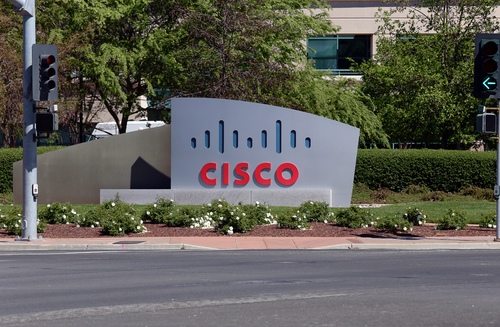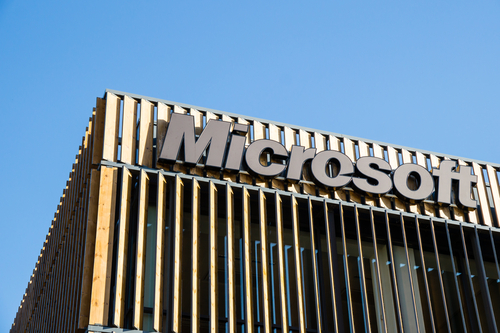October 2nd, 2014

Having your smartphone or tablet stolen is certainly no fun, but device theft could actually have more than just one victim. There’s also the individual who later purchases the stolen device. Buying a stolen device also isn’t ideal and some users have actually bought devices online that are still locked from their previous user. While there are some precautions you can take to avoid buying a stolen device, Apple has a tool that helps you avoid those devices that have been locked by the previous user. Lucian Constantin has more at TechWorld.
For used iPads, iPhones and iPods, Apple offers a tool through iCloud called Activation Lock. Users don’t need to login themselves, so you don’t have to be a current Apple device owner to use the service. All you need is the serial number of the device, or the IMEI (International Mobile Station Equipment Identity). By inputting one of those numbers, you’ll be able to see the current Lock status of the device.
This tool has been available since the release of iOS 7 as part of the Find My iPhone feature. It wasn’t turned on by default, however, until iOS 8.
The ability to check Activation Lock status is important because hackers actually figured out how to fool devices that had been locked remotely by their owners. That would allow them to sell functioning devices, but that also means the business of stealing devices would continue to be profitable. By using Activation Lock, users are able to see if the owner locked the device, even if it had been hacked and unlocked later.
Simply by including Activation Lock in iOS 7, Apple saw a significant drop in iPhone thefts in both New York and California. By having it on by default in iOS 8 and publicizing it more widely, it could decrease device theft even more.
Apple has some extremely helpful tool for when your phone is stolen or lost, but when your device is broken or just having issues, bring it to Geek Rescue or call us at 918-369-4335.
For your business solutions needs, visit our parent company JD Young.
September 10th, 2014

Despite the inherent dangers, many users continue to use the same password over and over again for all of their online accounts. Doing so makes it significantly easier to break into those accounts and, when one account is compromised, it greatly increases the risk to other accounts as well. That issue is the reason that a recent theft of Gmail addresses and passwords could potentially lead to millions of compromised accounts. As Lucian Constantin reports for PC World, 5-million email addresses and accompanying passwords were dumped in plain text on an online forum, recently.
The Gmail addresses all have a corresponding password with them, but that password isn’t necessarily the password to the user’s Google account. Instead, it’s suspected that rather than hacking Google to steal this information, cyber criminals have hacked other sites over the span of months or even years to compile this list. By hacking other sites that require an email address to register, the criminals were able to compile a list of Gmail accounts with a possible password that that user has used in the past.
So, for those users who re-use passwords, an unknown number of people could now know both their Gmail address and the password they need to log into it. Thanks to Google’s all-inclusive nature of accounts, compromising an individual Gmail account could also mean compromising their Google+ page, YouTube account, Google Drive and any other Google service being used.
It’s unconfirmed how many of the 5-million addresses and passwords are valid, but it’s estimated that at least 60-percent could be used successfully. That means that about 3-million Gmail users have their log-in credentials available online in plain text. Even if you don’t re-use passwords, this still seems like an ideal time to change not only your Gmail password, but also your password to other important online accounts as well.
At Geek Rescue, we have the expertise to enhance security at home or at the office and on any type of internet-ready device. If you have questions or concerns regarding the security of your devices, call us at 918-369-4335.
For other business solutions, visit our parent company JD Young.
July 22nd, 2014

Many times, wireless routers and modems are forgotten end points. While close attention is paid to securing PCs with appropriate security tools, these devices are often left unpatched and vulnerable to attacks. As Lucian Constantin reports at Computer World, owners of Cisco devices are currently in the crosshairs because of an exposed security flaw that affects nine wireless devices for both home and business use.
The vulnerability is described as “a buffer overflow that results from incorrect validation of input in HTTP requests.” This means that attackers can remotely inject and execute code on a user’s connected device, which would likely allow them to infect the device with malware. On the Common Vulnerability Scoring System (CVSS), this security flaw was given the highest score possible, a 10.0. That score denotes that successful exploits of the flaw “compromise the confidentiality, integrity and availability of the targeted device.”
The devices affected are capable of functioning as routers or wireless access points, but experts report that the devices are vulnerable regardless of which mode it’s currently operating in.
For many flaws found for routers, there are workarounds or quick fixes that temporarily fix the problem until a patch is made available, but not for this specific flaw. The only fix is to apply an update directly from Cisco.
The affected devices are:
- Cisco DPC3212 VoIP Cable Modem
- Cisco DPC3825 8×4 DOCSIS 3.0 Wireless Residential Gateway
- Cisco EPC3212 VoIP Cable Modem
- Cisco EPC3825 8×4 DOCSIS 3.0 Wireless Residential Gateway
- Cisco Model DPC3010 DOCSIS 3.0 8×4 Cable Modem
- Cisco Model DPC3925 8×4 DOCSIS 3.0 with Wireless Residential Gateway with EDVA
- Cisco Model DPQ3925 8×4 DOCSIS 3.0 Wireless Residential Gateway with EDVA
- Cisco Model EPC3010 DOCSIS 3.0 Cable Modem
- Cisco Model EPC3925 8×4 DOCSIS 3.0 with Wireless Residential Gateway with EDVA
Some of these models are distributed by service providers so you’ll want to check your device even if it was supplied by your ISP. If you’re currently using a device on this list, it’s vital that you apply a software update as soon as possible.
If you become the victim of an attack, or have any type of problem with your gadgets, call Geek Rescue at 918-369-4335.
For other solutions for your business, our parent company, JD Young, is here to help.
May 19th, 2014

It’s a well-known concern that Android users are much more at risk for malware infections than iOS users. Just a month ago, a fake antivirus app made the rounds in the official Google Play store and victimized a number of users. Google has since offered refunds to those who mistakenly downloaded the malicious app, but it seems they haven’t sufficiently protected against a similar threat reappearing. Lucian Constantin reports at Network World that the Google Play store and the app store for Windows Phones have both recently had malware hidden behind recognizable brand names identified in their stores.
It’s a fairly recent development, but it seems criminal developers are launching malicious apps with well-known company names to further confuse users. This is a well-known tactic of email scams and phishing websites.
One developer account launched malicous apps under the names Avira Antivirus, Mozilla Firefox, Google Chrome, Opera Mobile, Internet Explorer and Safari. The same developer also has a Kaspersky Mobile antivirus app complete with the company’s logo. When downloaded, the app will even simulate a scan of the device’s files.
Making these fake apps more believable, and more costly to users, is that they aren’t free. The Kaspersky Mobile app costs about $4. Most users instinctively trust paid apps more than free ones. A number of free apps have been reported to be malicious, but there’s an implied value tied to something that costs money. It’s also much more believable to pay money for a high quality, big name security app than to get it for nothing.
Some of these apps have been downloaded more than 10-thousand times and even made it onto the “Top Paid” apps list that helps them be further distributed.
Because there has been no sufficient changes made to the Android and Windows Phone app stores, it’s likely that these fake apps will continue to pop-up. However, since many of them steal the exact name of legitimate apps from recognized industry leaders, there’s also likely to be more pressure put on both Google and Microsoft to enhance security.
If you’ve mistakenly downloaded a malicious app, or are having any other kind of trouble with one of your devices, call Geek Rescue at 918-369-4335.
April 10th, 2014

Adware is the name for software that automatically generates advertisements. Usually it finds its way onto a computer by piggybacking on another program. Once on a user’s computer, ads can pop-up without warning either. Sometimes, these ads are displayed while using a web browser to disguise where they’re coming from and other times they pop-up seemingly from nowhere. As Lucian Constantin reports at Network World, however, Microsoft is implementing new guidelines for programs to discourage adware.
Starting July 1st, adware will be blocked by default, which seems like a move Microsoft would’ve taken ages ago. Up until now, it was up to users to decide what action to take when adware was detected by Microsoft’s security software.
The criteria for classifying adware is also becoming much more strict. Any program that displays ads of it’s own window or inside of another program like a web browser will risk being labeled as adware and blocked. Advertisements that stay within the program that displays them will be free of Microsoft’s wrath.
Those that do get flagged will have to pass the next level of tests. First, ads must have a clear way to be closed. This can be an “x” or the word “close” in the corner of the ad. Ads also must be clearly labeled to tell users what program they stem from. Microsoft suggests using language like “Ads by [blank]” or “Powered by [blank]”. Programs will also need to provide an uninstall method through Windows control panel to make it easy for users to remove them.
The idea behind the adware criteria is to give users more control over what is allowed to run on their own systems.
In the past, adware developers intentionally made it nearly impossible for average users to remove the entirety of the programs or reset changes made by them. The most popular forms of adware are browser toolbars, which are notoriously difficult to remove once installed.
These changes aren’t expected to put an end to what has become a lucrative business, but it will hopefully cut down on the amount of adware capable of penetrating computers with Windows operating systems.
If your computer is infected with adware, spyware or malware, bring it to Geek Rescue or call us at 918-369-4335.
April 9th, 2014

Recently, you may have noticed the scores of headlines reporting attacks on wireless routers. Major brands like Linksys and Asus have been plagued by attacks and experts are speculating that attacks on these devices are becoming a trend. Lucian Constantin at ComputerWorld reports on the details of why wireless routers have become such a popular target of cyber attacks.
The most obvious target of attacks is your computer. It contains a wealth of information that could be valuable for criminals to steal and processing power that attackers can harness. Because computers were being targeted by such a large volume of attacks, security began to improve. Not just in the form of antivirus programs, but even in the way operating systems and other applications were built and updated. Suddenly, it was much more difficult to attack a computer directly.
While hackers began developing more intelligent threats, most attacks will target the path of least resistance. That is no longer a user’s computer. Now, that’s a user’s router.
Wireless routers haven’t been the target of many attacks in the past, so manufacturers and users have not made security a priority. This has made attacking them now relatively easy. In fact, security flaws that haven’t been available to attackers for more than a decade are often still open on wireless routers.
In addition to the relative ease of access, attacking wireless routers allows criminals to access every device connected to them. Now, instead of using a targeted attack to infect one computer, a single attack targeting a router can infect every device in the home, which could include laptops, smartphones, tablets and even TVs, DVRs and other internet ready appliances.
Adding to the problem is the fact that routers aren’t updated automatically, which leads to many of them being extremely outdated from a security standpoint. They aren’t being made securely in the first place, but when a vulnerability becomes public, the patches and updates that are released aren’t being widely implemented. This is true of most applications that require users to actively search out an update and manually install it. In the case of routers, it requires some technical expertise to change settings and update. Many users fail to even change their router’s name and password from the factory default.
The first things for users to understand is that their router is vulnerable. It does need to be updated periodically and needs to have a strong password associated with it. For those who are capable, it’s a good idea your router’s admin interface unavailable from the internet.
Creating an effective security infrastructure requires securing a number of potential attack points. For help improving security for your home or business, or for help recovering from an attack or malware infection, call Geek Rescue at 918-369-4335.
February 7th, 2014

Many internet users believe that the key to avoiding a malware infection is to only visit legitimate websites and never open suspicious looking email or download attachments. While this is certainly going to keep users safe from a large amount of malware, it doesn’t keep them safe from all of it. This is evidenced by a recent exploit of a vulnerability in Adobe’s Flash player. As Lucian Constantin reports for PC World, this exploit infected victims with malware capable of stealing users’ log-in credentials for a variety of websites.
Security experts uncovered 11 exploit files targeting this vulnerability, which reveals that the same security flaw was being used by hackers in different ways. Some of the exploit files were designed to execute other files, one downloaded other malicious files and one was a trojan that steals log-in credentials saved in email and web browsers.
Experts found that each file was embedded within Microsoft Word .docx files and target Windows users specifically. Though one attack used malicious emails with a rigged .docx file as an attachment to infect users, most files were found in internet caches suggesting they were downloaded from websites.
These files have already been used in attacks against real-world users, as evidenced by Adobe’s use of the phrase “in the wild” to describe them. Since the vulnerability is known in the hacking community, expect more attacks to be rolled out exploiting it.
To their credit, Adobe scrambled to release a patch that would eliminate the Flash security flaw. This is version 12.0.0.44 for Windows and Mac users. If you haven’t updated Flash on your machine yet, be sure to do that as soon as possible.
If your computer has been infected with malware, bring it to Geek Rescue or call us at 918-369-4335.
January 20th, 2014

Google Chrome is the most used web browser in the world, but it recently made headlines for the wrong reasons. Chrome features extensions, which are additions that improve the capability and functionality of the browser. As Lucian Constantin reports at Computer World, two extensions were removed from the Chrome Web Store after users reported they were injecting adware into legitimate websites. This caused ads and paid links to appear for users with these extensions, which Google explicitly forbids in their extension agreement.
The nature of how these extensions began distributing adware is interesting. Both extensions, ‘Add to Feedly’ and ‘Tweet This Page’, were both sold recently by their developers. Both already had thousands of users who had added their extensions and both were developed as legitimate, useful extensions. Once they were sold, an update was released that featured no bug fixes or additional features. Instead, the update turned the extensions into adware.
When these new malicious extensions are added to Chrome, links on websites you visit are replaced with links to sites within an advertising network. Those responsible for altering the extensions are likely being paid each time a user clicks on these links. The sites a user is taken to aren’t necessarily harmful themselves, but they won’t be where anyone intended to go.
This method of altering existing extensions is effective because most users allow extensions to be updated automatically without having to take any action themselves. So, a third party is able to purchase an extension that is already installed on thousands of browsers and immediately have access to those users. It also seems that extensions with certain permissions are being targeted. Even trusted extensions often have permission to alter content on the websites a user visits. Some also have authorization to post to social media profiles or the ability to access passwords. With these permissions in place, altering an existing extension can give criminals the ability to post spam links, send users to malicious sites and steal log-in information.
Because of the way Google monitors extensions, security experts believe this method wouldn’t be effective for distributing malware. But, hackers can purchase extensions and make changes to accomplish a number of nasty jobs without having to infect users with typical malware.
Changes to Chrome’s Web Store may be coming soon to close this vulnerability. For now, make sure your extensions don’t update automatically and read the permissions of each carefully.
If your computer has been compromised and is need of a repair, call Geek Rescue at 918-369-4335.
December 20th, 2013

Security researchers have reported previously that hackers and some forms of malware can claim control of your computer’s webcam. In some instances of ransomware, the webcam is used to capture an image of the user in an intimidation attempt. In other cases, the webcam can be used without the users knowledge to spy on unsuspecting victims. Lucian Constantin of Network World reports that users with older Macs are particularly susceptible to this form of cyber attack.
On iMac and MacBook computers manufactured before 2008, first generation iSight webcams were used. These webcams have their LED light, which indicates when the webcam is in use, linked directly to the image sensor. When the LED is on, it means the webcam is capturing images, but hackers have found a way to alter the webcam’s firmware so the light doesn’t come on while the camera is active.
Not only does this allow spying on users without their knowledge, but being able to modify the webcam’s firmware also allows for malware to infect a Mac from a virtual machine. To do so, hackers would need to reprogram the webcam to act as a keyboard.
To defend against this type of attack, an extension could be created that blocks certain USB device requests. With a defense such as this in place, a hacker would need root access to alter the webcam’s behavior.
The most impenetrable defense would need to come in the form of a hardware redesign of the camera itself, which would make it impossible to disable the LED indicator. Researchers have already sent suggestions to Apple, but have yet to hear back.
Users who have an older Mac computer can take one easy precaution to prevent spying. That’s put tape, or a bandage, over the webcam. This doesn’t prevent malware infections, however that type of attack is extremely rare, at least for the time being.
If your device has been attacked or you’d like to improve your security, call Geek Rescue at 918-369-4335.
December 12th, 2013

Adobe’s products are used across the internet, which is why it’s a serious problem when security exploits pop up for one of them. Lucian Constantin reports for Network World that critical vulnerabilities that existed in both the Flash and Shockwave players have been patched.
The vulnerability involved the players’ auto-play functions. Attacks were being designed to trick user into opening a Microsoft Word document containing malicious Flash elements that were automatically executed upon opening. By exploiting this vulnerability, hackers are able to take control of a user’s computer.
For users who updated Flash recently to version 11.6, a patch wasn’t needed. That version introduced a click to play feature for all Flash elements embedded in Microsoft Office documents. This patch was still needed not only for users with older versions of Flash and Shockwave, but also because it updated the players bundled with web browsers Google Chrome and Microsoft Internet Explorer 10 and 11.
With millions of users of both Flash and Shockwave, they’re valuable targets for attacks. Keeping them updated and patched is important to close security flaws and vulnerabilities.
Keeping applications like antivirus programs and web browsers and your operating system up to date is important for security reasons and to resolve bugs and performance issues. If your computer has been infected by a virus or malware due to a security vulnerability, or if you’d like to improve your system’s security, call Geek Rescue at 918-369-4335.




















